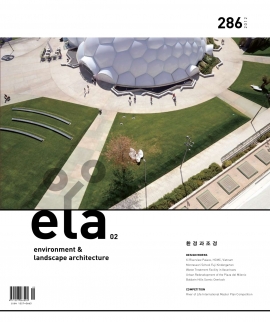Waste Treatment Facility in Vacarisses
Batlle/Roig Arquitectes | www.batlleiroig.com
스페인 바카리세스시 발레스 옥시덴탈 지역의 쓰레기 처리시설(Waste Treatment Facility, 스페인어로는 CTRV)은 콜 카르두스(Coll Cardus) 단층 지괴를 내려다보는 경사면에 자리 잡고 있다.
현재 이곳에는 매립 가능 용량이 거의 한계에 다다른 쓰레기 매립지가 들어서 있다. 이 때문에 해당 시설의 운영주체는 시설의 폐쇄 절차를 준비하는 한편, 이 지역의 향후 활용방안에 대해 연구하게 되었다. CTRV의 입지 선정에 있어서는 쓰레기 처리 관련 시설의 설치 및 운영으로부터 비롯될 수 있는 환경적 영향을 최소화하는 것뿐만 아니라, 운반 및 경제적 타당성 등에 대한 다양한 기준들이 고려되었다.
쓰레기 매립지로 인해 자연환경에는 달갑지 않은 지형적 변화 및 왜곡이 일어나게 되었다. 이러한 이유로 쓰레기 처리시설들을 이미 매립지에 의한 환경적 파괴가 일어난 지역에 건립하기로 결정한 것이다. 처리시설의 규모는 매우 크지만, 주변 환경과의 경관적 통합을 최대한 이끌어낼 수 있도록 기획되었다. 이러한 목표를 달성하기 위해 고도의 지형적 변용을 추구하고 있으며, 이를 통해 지붕이나 건물의 전면부가 갖게 될 영향을 향후의 경관 복원을 바탕으로 최소화할 수 있도록 하였다.
Design _ Batlle | Roig Arquitectes
Client _ Consorci per a la Gestio dels Residus del Valles Occidental
Collaborators _ Xavier Ramoneda, Mario Suner(architect), IDEMA(engineering)
Location _ Vacarisses(Barcelona), Spain
Area _ 45,000㎡
Completion _ 2010
Photograph _ Francisco Urrutia
The Waste Treatment Facility (CTRV, in Spanish) is located on a hillside overlooking the Coll Cardus massif in the municipality of Vacarisses, in the district of the Valles Occidental. This site is currently taken up by a controlled waste landfill site nearing its capacity limit. This fact has caused its managing body to consider regulating the closure of the facility and to study possible future uses for the area. The choice of the location of the CTRV has also taken into account different criteria of logistical and economic suitability, as well as the minimization of the environmental impact resulting from the installation and operation of waste managementrelated activities.
The activity of the landfill site has led to unfriendly topographical alterations and modifications in the natural environment. For this reason, we decided to establish the facilities in those areas where the activity of the landfill had already damaged the natural environment. Despite the size of the plant facilities, it is intended to achieve the highest landscape integration with the environment. In order to achieve this goal, we pursue a high topographical adaptation, where the impact from roofs and facades is minimized by the subsequent landscape restoration.





